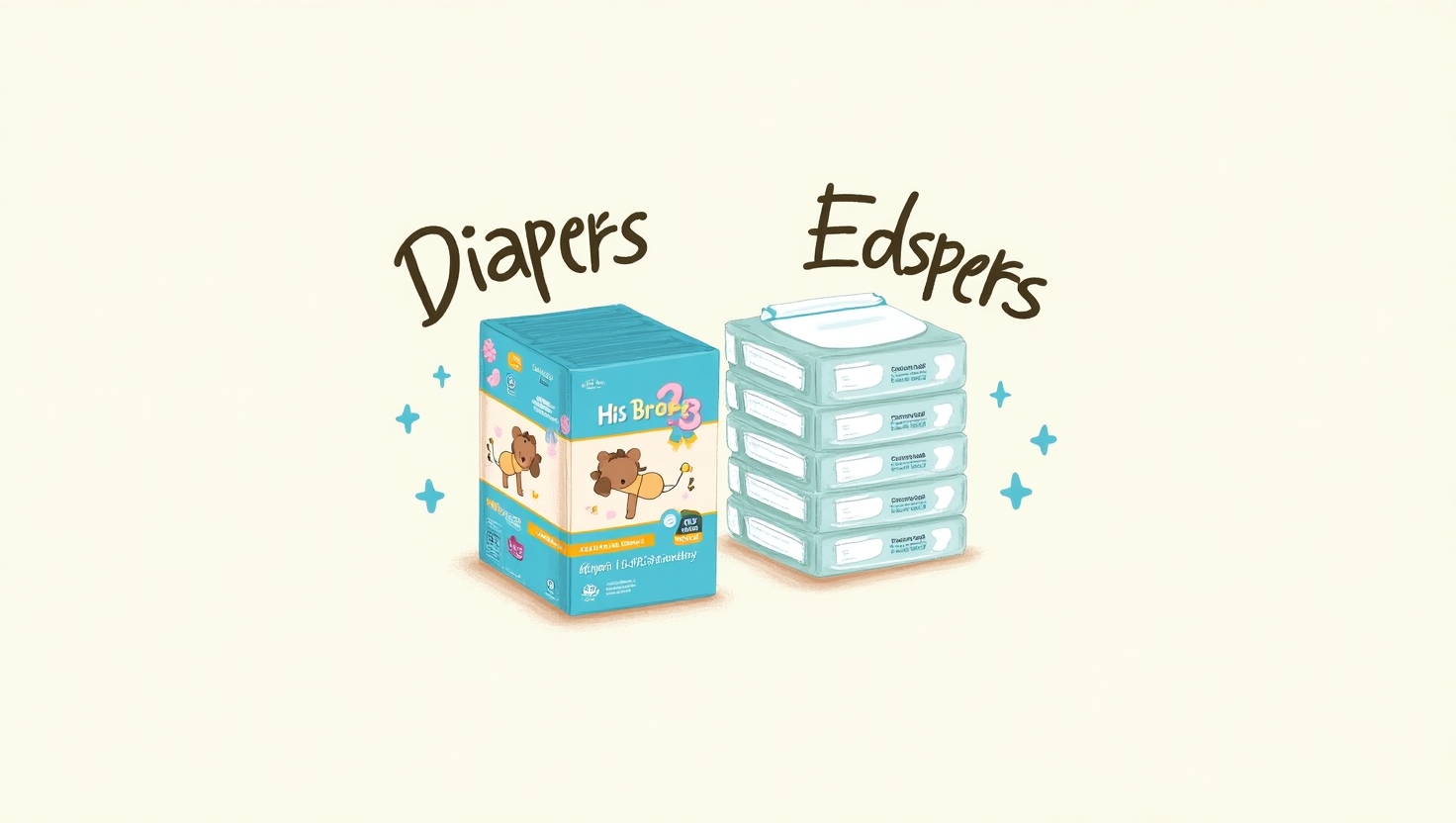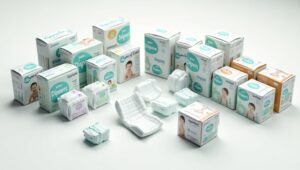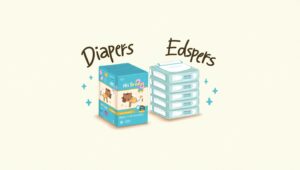What Is a Diaper?
Diapers are one of the most essential items for parents, caregivers, and even healthcare professionals. Most people associate diapers with infants and toddlers, but diapers are also used by adults for various medical, mobility, or aging-related reasons. If you’re a new parent or just looking to better understand what a diaper is, this complete guide will walk you through everything: from the definition, types, and uses of baby diapers, to a detailed look into adult diapers—why they’re important, who uses them, and how to choose the right one.
What Is a Diaper?
A diaper is an absorbent garment worn by individuals who are not yet toilet trained or cannot control their bladder or bowel movements. It is designed to absorb urine, contain stool, and prevent leakage, thus keeping clothing and bedding clean and dry.
While diapers are most commonly used for babies and toddlers, they are also necessary for certain adults—particularly the elderly or those with medical conditions that cause incontinence. The two broad categories of diapers are baby diapers and adult diapers, each tailored to the needs of the user.
Why Diapers Are Important
Diapers are more than just a convenience—they are a hygiene product that plays a critical role in:
- Preventing skin irritation or rashes
- Reducing the spread of bacteria or viruses
- Supporting mobility and dignity (especially for adults)
- Making caregiving manageable and more efficient
- Helping babies stay comfortable and dry
Types of Diapers for Babies and Toddlers
Parents today have a variety of diaper options, and the right choice depends on lifestyle, budget, environmental concerns, and personal preference.
1. Disposable Diapers
The most widely used option, disposable diapers are made from absorbent polymers and waterproof materials. They are single-use and easy to discard.
Pros:
- Highly absorbent
- Easy to use and dispose of
- Readily available
- Good for travel
Cons:
- Not environmentally friendly
- Can be expensive over time
- May contain chemicals like dyes or fragrances
Best for: Busy families or those looking for convenience.
2. Cloth Diapers
These are reusable diapers made from natural fibers such as cotton, bamboo, or hemp. They come in multiple formats like prefolds, fitted, and all-in-ones.
Pros:
- Eco-friendly
- Reusable and cost-effective
- No harsh chemicals
- Soft on baby’s skin
Cons:
- Require washing and maintenance
- Not ideal for travel
- Higher upfront cost
Best for: Environmentally conscious families or those looking to save money long-term.
3. Biodegradable Diapers
These eco-friendly alternatives to disposables are made from plant-based or compostable materials.
Pros:
- Less environmental impact
- Made from safer materials
- Some are compostable
Cons:
- Expensive
- Not always 100% biodegradable
- Less absorbent than traditional disposables
Best for: Parents seeking sustainable options without switching to cloth.
4. Training Pants (Pull-Ups)
Designed for toddlers who are starting potty training, training pants can be pulled up like underwear but still provide absorbency.
Pros:
- Encourages independence
- Easy for toddlers to pull up/down
- Less intimidating than diapers
Cons:
- Costlier than diapers
- Not ideal for overnight use
Best for: Toddlers in transition to toilet training.
5. Swim Diapers
These are worn during swimming and are designed to contain solid waste without swelling up in water.
Pros:
- Don’t swell in water
- Reusable and disposable options available
Cons:
- Not for everyday use
- Don’t absorb urine
Best for: Pool or beach outings.
How to Choose the Right Diaper for Your Baby
Here are some tips to help you make the best decision:
- Age and Size: Diaper sizes are based on baby weight. Make sure it fits snugly but not tightly.
- Sensitivity: If your baby has sensitive skin, opt for hypoallergenic or fragrance-free options.
- Lifestyle: Cloth diapers are great for home, but disposables may be better when traveling.
- Budget: Cloth diapers have a high initial cost but save money over time; disposables are more expensive month to month.
How Often Should You Change a Baby’s Diaper?
- Newborns: Every 2 to 3 hours (up to 12 times a day)
- Infants: Every 3 to 4 hours
- Toddlers: Every 4 to 6 hours or when wet/soiled
Regular diaper changes prevent rashes, infections, and discomfort.
Understanding Diaper Rash and How to Prevent It
Causes of Diaper Rash:
- Prolonged exposure to moisture
- Friction
- Yeast or bacterial infection
- Allergic reaction to diaper material or wipes
Prevention and Treatment:
- Change diapers frequently
- Let the area air out during changes
- Use barrier creams with zinc oxide
- Try a different diaper brand if irritation persists
Diapering Essentials for New Parents
- Diapers (cloth or disposable)
- Baby wipes or warm water and cloth
- Diaper rash cream
- Diaper pail or sealed trash can
- Portable changing mat
- Extra clothes for the baby
Now Let’s Talk About Adult Diapers
While baby diapers are widely known, adult diapers serve an equally important purpose—managing incontinence, mobility issues, or other health concerns. These products help maintain dignity, comfort, and hygiene for millions of adults.
What Are Adult Diapers?
Adult diapers are absorbent garments designed for adults who experience urinary or fecal incontinence. They are also used in hospitals, by people with disabilities, and in certain medical conditions like post-surgery recovery, dementia, or paralysis.
Just like baby diapers, adult versions come in different sizes, absorbency levels, and designs. Some look like regular underwear (pull-ups), while others are more like traditional diapers with adhesive tabs.
Who Uses Adult Diapers?
- Elderly individuals with mobility or bladder issues
- Adults with incontinence due to medical conditions (e.g., diabetes, spinal injuries)
- People with severe diarrhea or gastrointestinal diseases
- Adults recovering from surgery
- Individuals with cognitive impairments like Alzheimer’s or dementia
- People with limited access to restrooms (e.g., in long travel or high-risk jobs)
Types of Adult Diapers
1. Disposable Adult Diapers
- Easy to use and dispose of
- Ideal for travel, hospitals, or home care
- Come in light, moderate, or heavy absorbency levels
2. Reusable Cloth Diapers
- Washable and cost-effective
- Made from soft, breathable materials
- Environmentally friendly
3. Pull-Ups or Protective Underwear
- Look and feel like underwear
- Best for active adults with mild incontinence
- Easy to change without assistance
4. Adult Diaper Briefs with Tabs
- Provide a snug fit
- Ideal for individuals with limited mobility
- Offer maximum absorbency
Benefits of Adult Diapers
- Improved Quality of Life: Helps users maintain an active and social lifestyle.
- Dignity: Reduces the embarrassment associated with incontinence.
- Hygiene: Keeps skin dry and clean.
- Caregiver Relief: Easier for family members or nurses to manage hygiene.
Choosing the Right Adult Diaper
When selecting an adult diaper, consider the following:
- Absorbency Needs: Day vs. night, light vs. heavy incontinence.
- Mobility: Whether the user is active or bedridden.
- Skin Sensitivity: Look for breathable and hypoallergenic materials.
- Size and Fit: Prevents leakage and enhances comfort.
- Budget: Reusable may save more in the long term; disposables offer convenience.
Adult Diapers and Mental Health
Incontinence can deeply affect a person’s self-esteem and mental well-being. Many people feel shame or embarrassment, but using adult diapers can actually empower individuals by offering freedom, control, and dignity.
Encouraging open discussions and normalizing adult diaper use—just like we do with baby diapers—can make a big difference in reducing the stigma around incontinence.
Care Tips for Adult Diaper Users
- Change the diaper as soon as it’s soiled to prevent rashes and infections.
- Keep the area clean and dry.
- Use moisture barrier creams.
- Maintain a routine to check for wetness.
- Properly dispose of or wash used products to avoid odor and bacteria.
Conclusion
Whether you’re preparing to welcome a baby or caring for a loved one with incontinence, understanding diapers is essential. Diapers are not just products—they’re tools for better hygiene, comfort, and confidence.
From choosing the best diaper for your newborn to selecting the right adult diaper for medical or personal needs, your choices can significantly improve quality of life.
Let’s remember: diapers are a part of life’s journey—for the beginning, and sometimes later in life. Choosing the right one isn’t just about convenience—it’s about care, dignity, and comfort.








